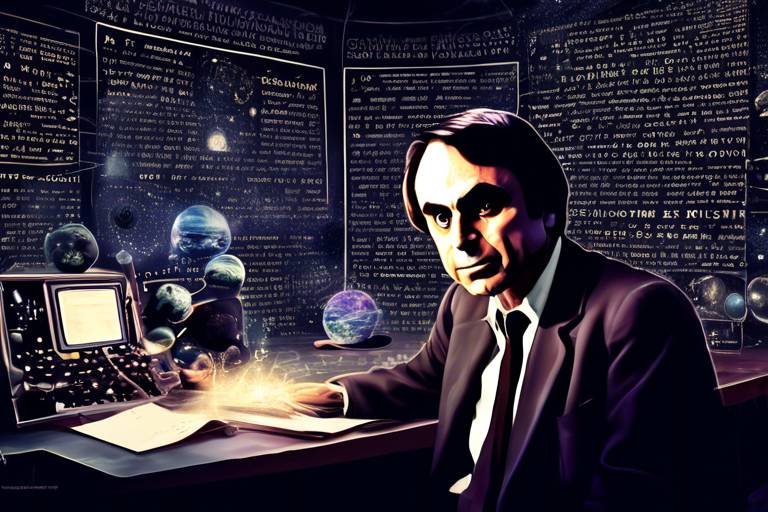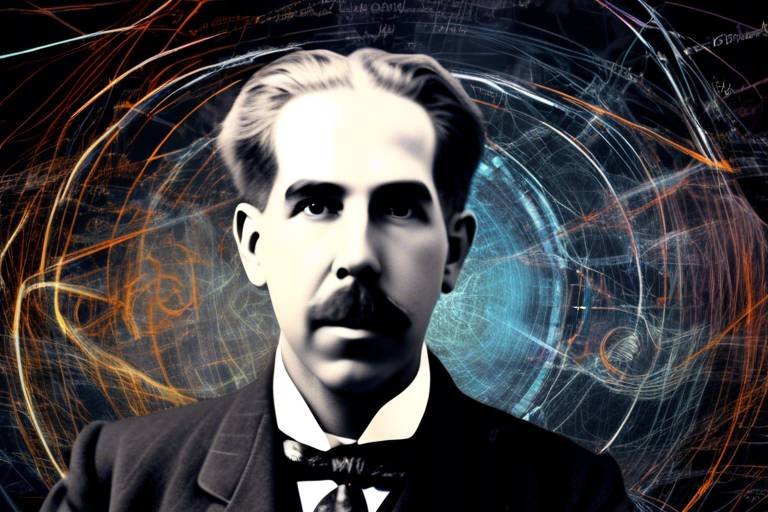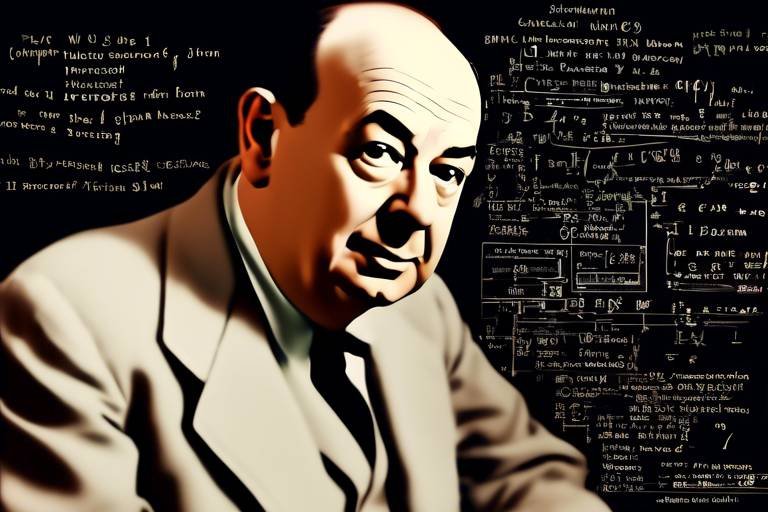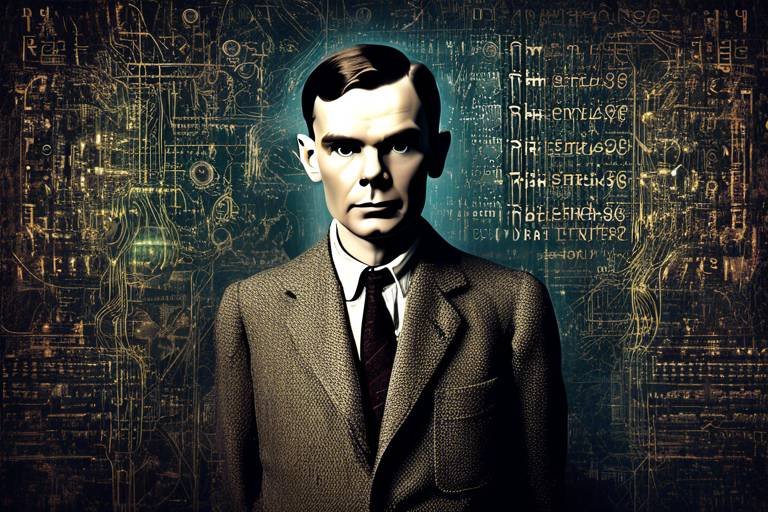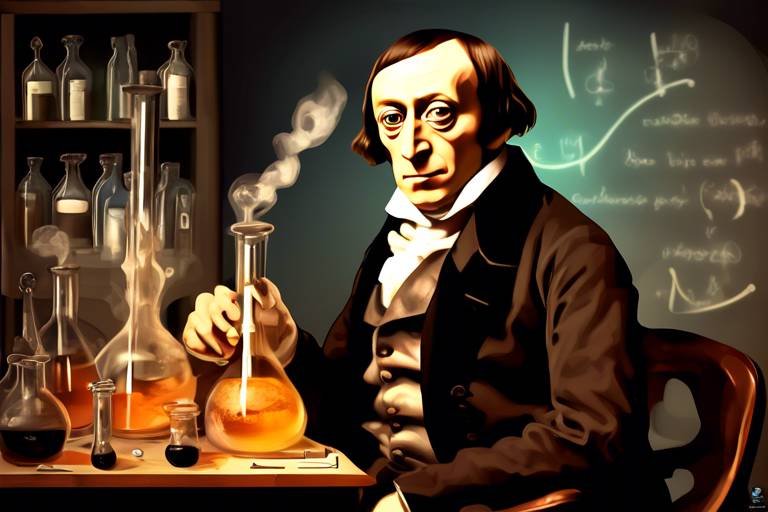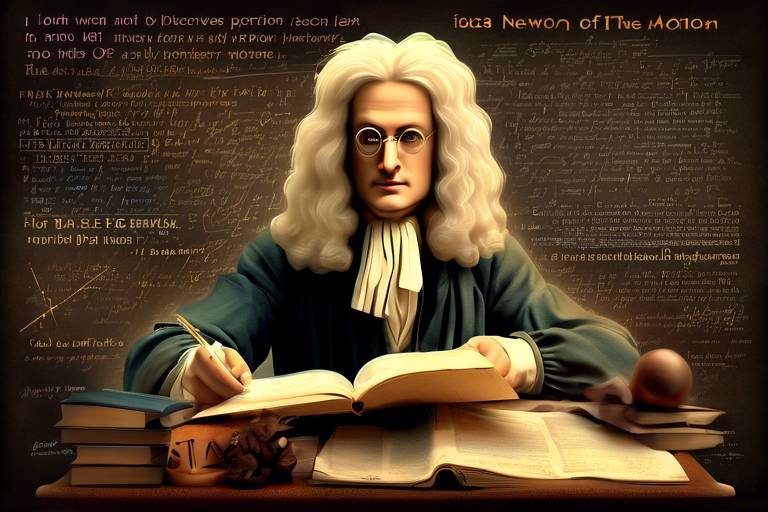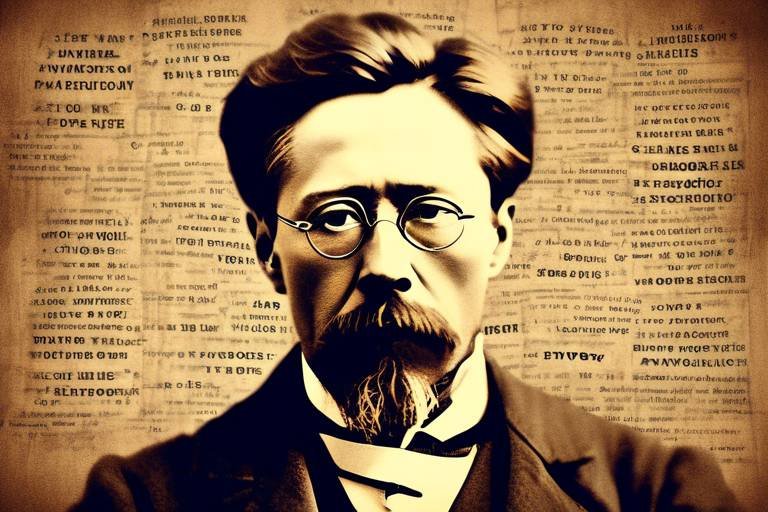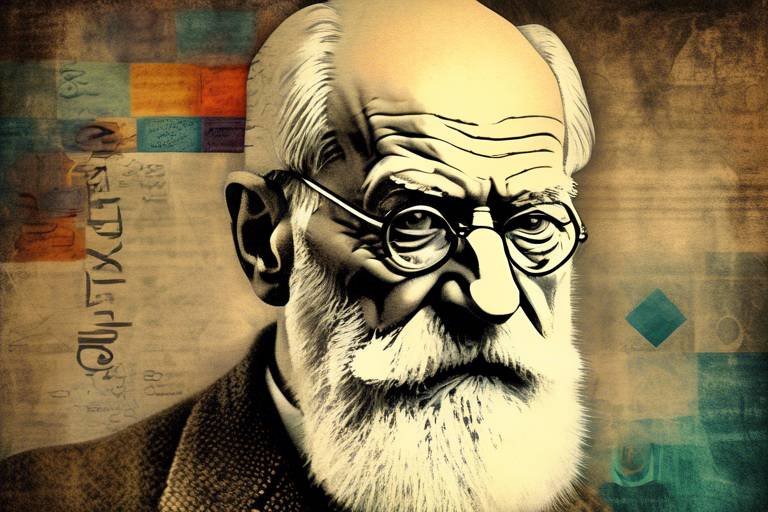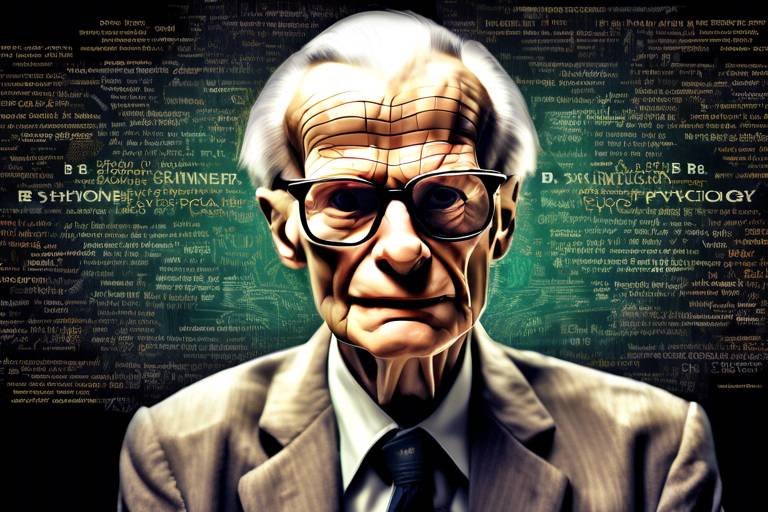The Groundbreaking Work of Chien-Shiung Wu in Experimental Physics
When we think of the giants in the field of physics, names like Einstein and Newton often come to mind. However, there’s another name that deserves a prominent place in that pantheon: Chien-Shiung Wu. Often referred to as the "First Lady of Physics," Wu's contributions have not only reshaped our understanding of the universe but have also paved the way for future generations of scientists, particularly women in this traditionally male-dominated field. Her journey from a small village in China to becoming a leading experimental physicist in the United States is nothing short of inspirational.
Born on May 31, 1912, in Liuhe, China, Wu exhibited an extraordinary aptitude for science from a young age. She pursued her education with relentless determination, eventually earning her degree from National Central University in Nanjing. Wu's thirst for knowledge led her to the United States, where she would make groundbreaking contributions that would forever change the landscape of physics. In a world where women were often sidelined, her achievements shone brightly, challenging the status quo and inspiring countless others.
Wu's work is characterized by her meticulous experimental techniques and profound insights. One of her most significant contributions was her involvement in the Manhattan Project during World War II. This monumental project aimed to develop the atomic bomb, and Wu played a crucial role by working on the separation of isotopes of uranium. Her expertise in experimental physics was instrumental in achieving the project's goals, showcasing her remarkable skills at a time when women were often underestimated in scientific roles.
But her legacy doesn’t stop there. Wu's most famous experiment, the Parity Violation Experiment, conducted in the 1950s, challenged the long-held belief that the laws of physics are the same for all orientations in space. This groundbreaking work demonstrated that certain weak interactions do not obey parity conservation, a revelation that had profound implications for the field of particle physics. It was a bold statement that shifted the paradigm of understanding in physics and earned her international acclaim. Wu's ability to question established norms and push the boundaries of knowledge is what makes her contributions so remarkable.
Throughout her career, Wu received numerous accolades, including the prestigious National Medal of Science. This award is one of the highest honors a scientist can receive and recognized her exceptional contributions to the field. Wu’s legacy continues to inspire scientists today, as her work not only advanced experimental physics but also paved the way for greater inclusivity in the field. She has become a symbol of perseverance and excellence, motivating young women to pursue careers in science and engineering.
In summary, Chien-Shiung Wu's groundbreaking work in experimental physics has left an indelible mark on the scientific community. Her journey is a testament to the power of determination and intellect, proving that with hard work and passion, barriers can be broken. As we continue to explore the mysteries of the universe, let us remember the contributions of pioneers like Wu, who have shaped the path for future discoveries.
- What was Chien-Shiung Wu's most significant contribution to physics?
Her most notable contribution was the Parity Violation Experiment, which demonstrated that certain weak interactions do not obey the principle of parity conservation. - Did Chien-Shiung Wu receive any awards for her work?
Yes, she received numerous awards, including the National Medal of Science, recognizing her groundbreaking contributions to physics. - How did Wu influence women in science?
Wu's achievements in a male-dominated field served as an inspiration for many women, encouraging them to pursue careers in science and breaking down barriers. - What role did Wu play in the Manhattan Project?
She worked on the separation of isotopes of uranium, contributing significantly to the project’s success during World War II.

Early Life and Education
Chien-Shiung Wu was born on May 31, 1912, in Liuhe, a small town in China. From a young age, her innate curiosity and remarkable intelligence set her apart from her peers. Picture a young girl captivated by the mysteries of the universe, eagerly exploring the world around her. This passion for learning led her to pursue education in a time when opportunities for women were limited. Wu's parents recognized her potential and supported her education, which was a rarity during that era.
In 1929, she enrolled at National Central University in Nanjing, where she studied physics. It was here that her fascination with the subject deepened, and she excelled academically. Wu's determination was evident as she often found herself as the only woman in her classes, yet she thrived, earning her bachelor's degree in 1934. Her academic journey did not stop there; she sought further knowledge and opportunities abroad.
In 1936, Wu made a bold move to the United States to pursue her graduate studies at the University of California, Berkeley. Imagine the excitement and trepidation of a young woman venturing into a new world, ready to conquer the challenges of a foreign land. Wu's perseverance paid off, as she earned her Ph.D. in physics in 1940, becoming one of the few women to achieve this feat at the time. Her dissertation focused on experimental physics, laying the groundwork for her future groundbreaking work.
Throughout her education, Wu faced numerous challenges, including cultural barriers and gender discrimination. Yet, she remained undeterred, often stating that her passion for physics was a driving force that helped her overcome these obstacles. Her journey reflects not only her personal determination but also the broader struggle for women in science. Wu's early life and education were not just about acquiring knowledge; they were about breaking down barriers and paving the way for future generations of female scientists.
As a tribute to her remarkable journey, here’s a brief overview of her educational milestones:
| Year | Institution | Degree |
|---|---|---|
| 1929 | National Central University | Bachelor's in Physics |
| 1940 | University of California, Berkeley | Ph.D. in Physics |
In summary, Chien-Shiung Wu's early life and education were marked by exceptional talent, relentless determination, and a passion for physics that knew no bounds. Her story is a powerful reminder that with dedication and resilience, one can overcome even the most daunting challenges. As we delve deeper into her career milestones, it becomes clear that her foundational years were just the beginning of a legacy that would inspire countless individuals in the field of science.

Career Milestones
Chien-Shiung Wu's career is a tapestry woven with remarkable achievements and significant contributions to the field of physics. Her journey began in the early 1940s, a time when the world was engulfed in the chaos of World War II. This period was not just a backdrop for Wu's career; it was a catalyst that propelled her into the limelight of scientific research. After earning her Ph.D. from Columbia University in 1940, she quickly established herself as a formidable experimental physicist, working alongside some of the brightest minds of her time.
One of the most pivotal moments in Wu's career was her involvement in the Manhattan Project. This top-secret government initiative aimed to develop the atomic bomb, and Wu played a crucial role in the project, particularly in the development of techniques for isolating uranium and understanding the physics behind nuclear reactions. Her work was not just about contributing to a monumental scientific endeavor; it was a testament to her skills and determination, showcasing her ability to thrive in a male-dominated field.
After the war, Wu continued to make waves in the physics community. She joined the faculty at Columbia University, where she collaborated with renowned physicists like Isidor Rabi and Robert R. Wilson. These collaborations were not merely professional; they were a fusion of ideas that led to groundbreaking research in nuclear physics. Wu's work during this period included significant contributions to the understanding of beta decay, which would later culminate in her famous parity violation experiment.
Wu's career milestones can be summarized in the following table, highlighting her key achievements:
| Year | Milestone |
|---|---|
| 1940 | Earned Ph.D. from Columbia University |
| 1942-1945 | Contributed to the Manhattan Project |
| 1956 | Conducted the parity violation experiment |
| 1975 | First female president of the American Physical Society |
Moreover, Wu's commitment to science extended beyond her research. She was an ardent advocate for women in science, often speaking about the challenges she faced and the importance of representation in STEM fields. Her achievements inspired countless women to pursue careers in physics, breaking down barriers and challenging stereotypes. Wu's legacy is not just in her scientific contributions but also in her role as a mentor and a pioneer for future generations of female scientists.
In summary, Chien-Shiung Wu's career milestones reflect a life dedicated to scientific inquiry and innovation. Each achievement was not just a personal victory but a step forward for women in science, paving the way for a more inclusive future in physics.
- What were Chien-Shiung Wu's major contributions to physics? Wu is best known for her work on the Manhattan Project and her groundbreaking parity violation experiment, which challenged existing notions in physics.
- How did Wu influence women in science? Wu's achievements and advocacy for women in STEM inspired many female scientists to pursue their careers despite societal barriers.
- What awards did Chien-Shiung Wu receive? Throughout her career, Wu received numerous accolades, including the National Medal of Science and being the first female president of the American Physical Society.
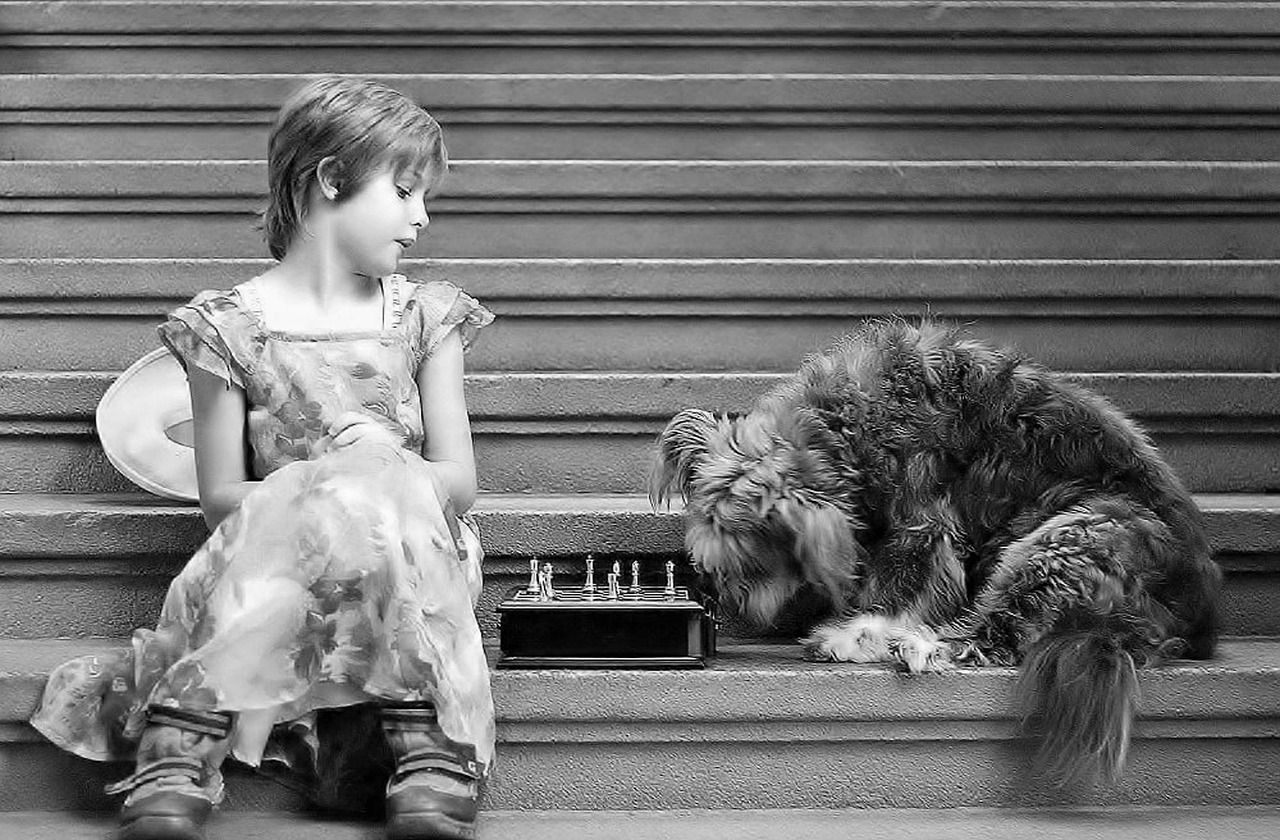
Contribution to Manhattan Project
Chien-Shiung Wu's involvement in the Manhattan Project during World War II was nothing short of revolutionary. As a young physicist, she was thrust into a high-stakes environment where her skills in experimental physics were not just appreciated but deemed essential. Imagine being part of a team working on something as monumental as the development of the atomic bomb. It was a time when the world was at war, and scientific breakthroughs were seen as pivotal to victory.
Wu was primarily assigned to the Columbia University division of the project, where she worked alongside some of the most brilliant minds of her time, including Enrico Fermi and Leo Szilard. Her expertise in nuclear physics allowed her to contribute significantly to the understanding of uranium enrichment, a critical component in the bomb's development. She was responsible for conducting experiments that measured the behavior of particles, which ultimately played a vital role in refining the methods used to create the bomb.
One of her notable contributions was the development of a technique to separate isotopes of uranium, which was crucial for producing the fissile material needed for the bomb. This process involved intricate experiments and precise measurements, showcasing her remarkable skill and attention to detail. Wu's work in this area was so impactful that it laid the groundwork for future advancements in nuclear physics.
Despite her significant contributions, Wu's role was often overshadowed by her male counterparts. This disparity highlights the challenges women faced in science during that era. However, her participation in the Manhattan Project served as a beacon of hope for many aspiring female scientists. It demonstrated that women could excel in fields dominated by men, effectively breaking barriers and paving the way for future generations.
In summary, Chien-Shiung Wu's contributions to the Manhattan Project were not only pivotal in the context of the war but also transformative for the field of experimental physics. Her work exemplified the potential of women in science, and her legacy continues to inspire countless individuals to pursue careers in this challenging yet rewarding field.
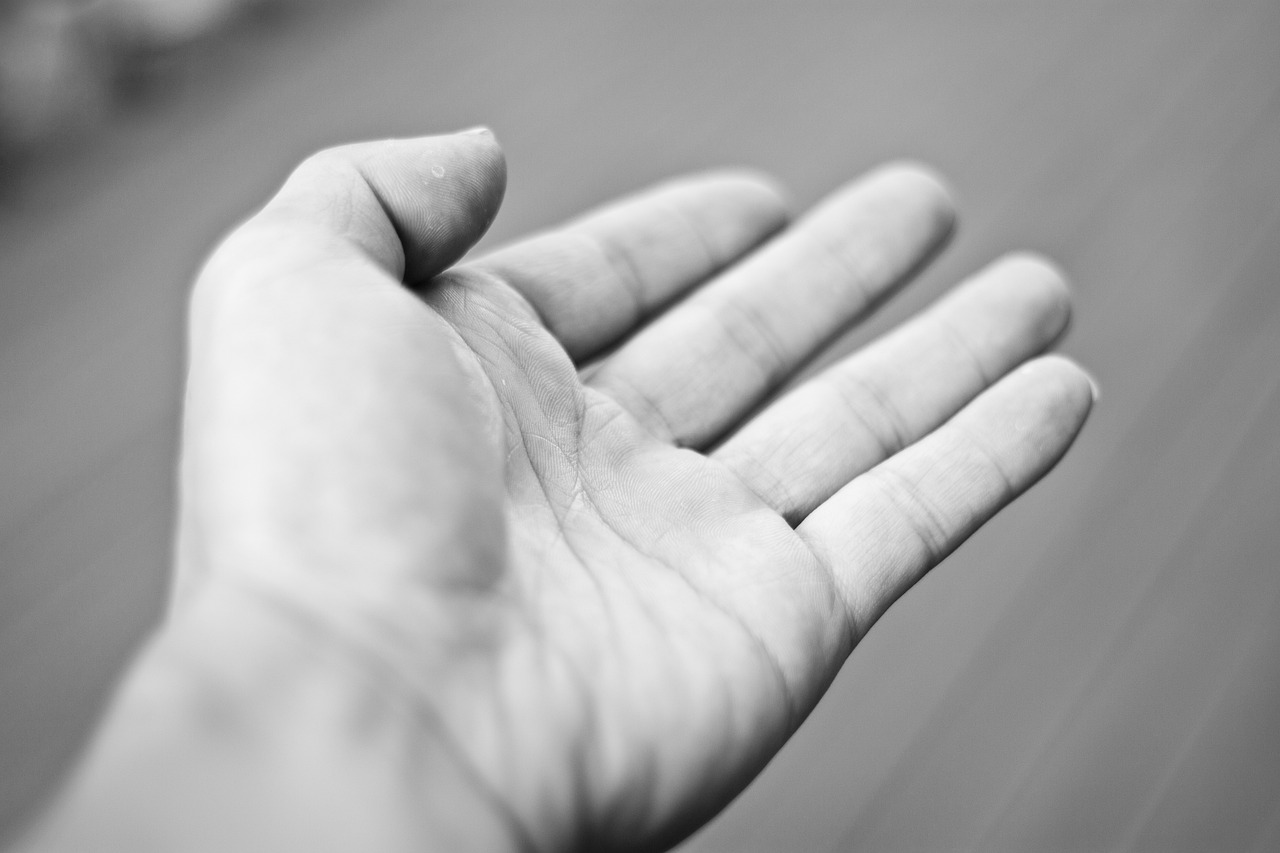
Role in Nuclear Physics
Chien-Shiung Wu's contributions to nuclear physics are nothing short of revolutionary. During her time at Columbia University, she engaged in groundbreaking research that transformed our understanding of atomic particles and their interactions. Her work primarily focused on beta decay, a process crucial to the field of nuclear physics.
One of Wu's most notable achievements was her involvement in experiments that explored the weak force, one of the four fundamental forces of nature. This force is responsible for processes such as beta decay, where a neutron decays into a proton, emitting an electron and an antineutrino. Wu's meticulous experimentation provided vital insights into this process, challenging previously held notions about particle behavior.
To illustrate the significance of her work, consider the following table that summarizes key aspects of her contributions:
| Aspect | Description |
|---|---|
| Beta Decay | Wu's experiments clarified the mechanics of beta decay, leading to a deeper understanding of weak interactions. |
| Weak Force | Her research contributed to the understanding of the weak force, illustrating its role in nuclear reactions. |
| Scientific Community | Wu's findings opened new avenues for research, influencing generations of physicists. |
Wu's experiments also led to the discovery of parity violation in weak interactions, a groundbreaking finding that contradicted the long-held belief that nature behaves symmetrically. This revelation was monumental, as it not only advanced theoretical physics but also prompted a reevaluation of existing models of particle physics. Her work was pivotal in establishing the framework for the Standard Model, which describes the fundamental particles and forces that govern the universe.
Moreover, Wu's role in nuclear physics extended beyond her research. She was an advocate for women in science, often emphasizing the importance of diversity in scientific inquiry. By breaking barriers in a male-dominated field, she paved the way for future generations of female physicists, demonstrating that passion and dedication can lead to groundbreaking discoveries, regardless of gender.
In summary, Chien-Shiung Wu's role in nuclear physics was characterized by her exceptional research and her commitment to fostering an inclusive scientific community. Her contributions not only reshaped our understanding of fundamental forces but also inspired countless individuals to pursue careers in science, leaving an indelible mark on the field of physics.
- What was Chien-Shiung Wu's most significant contribution to physics? Wu's most significant contribution was her demonstration of parity violation in weak interactions, which challenged existing theories in particle physics.
- How did Wu impact women in science? Wu served as a role model for women in science, breaking barriers and encouraging many to pursue careers in physics.
- What awards did Chien-Shiung Wu receive? Throughout her career, she received numerous awards, including the National Medal of Science, recognizing her contributions to the field.
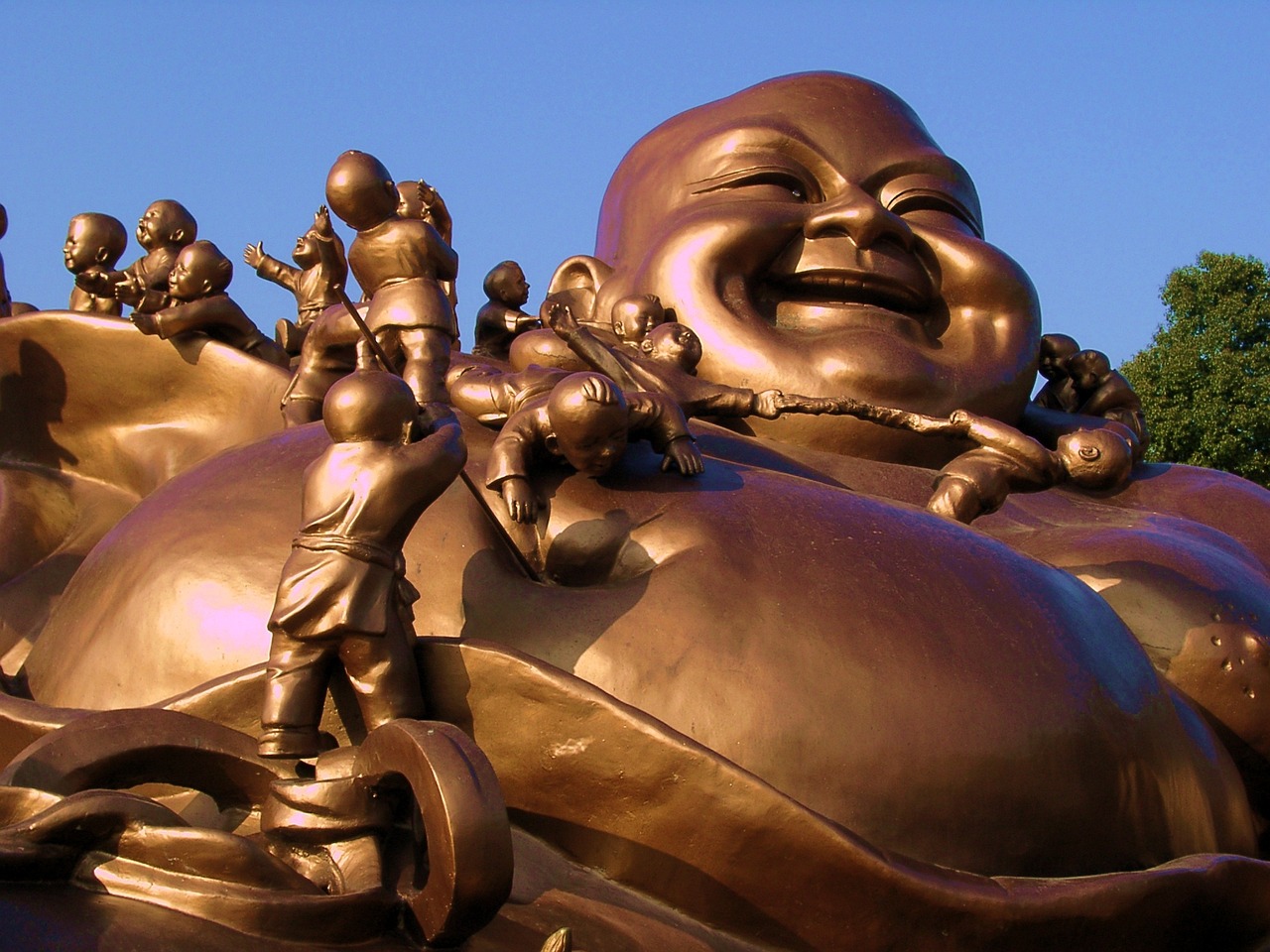
Impact on Women in Science
Chien-Shiung Wu's influence extends far beyond her groundbreaking research; she has become a beacon of hope and inspiration for countless women pursuing careers in science. In a field historically dominated by men, Wu's remarkable achievements challenged the status quo, proving that women could excel in experimental physics and make significant contributions to our understanding of the universe. Her journey was not just about personal success; it represented a transformation in the perception of women in science.
By breaking through barriers, Wu opened doors for future generations of female scientists. Her participation in the Manhattan Project during World War II showcased her exceptional skills and intellect, allowing her to stand shoulder to shoulder with some of the greatest minds of the time. This visibility was crucial, as it demonstrated that women were not only capable of participating in high-stakes scientific endeavors but could also lead and innovate within those spaces.
Moreover, Wu's legacy is reflected in the increasing representation of women in physics and related fields. As more women entered science, they were able to look to Wu as a role model, someone who had navigated the challenges of a male-dominated environment and emerged victorious. Her story resonates with many aspiring female physicists, encouraging them to pursue their passions despite the obstacles they may face.
To further illustrate her impact, consider the following points:
- Mentorship: Wu actively mentored young women in science, fostering an environment of support and encouragement.
- Advocacy: She advocated for greater inclusivity and equality in scientific research, paving the way for policies that support women in STEM.
- Recognition: Wu received numerous accolades that highlighted her contributions, bringing attention to the importance of female scientists in the field.
In essence, Chien-Shiung Wu's legacy is a powerful reminder that science thrives on diversity. Her impact on women in science is not just about her individual accomplishments; it's about the collective progress of women who have followed in her footsteps. By continuing to inspire and empower, Wu has played a pivotal role in shaping a more inclusive scientific community where future generations can flourish.
- What challenges did Chien-Shiung Wu face as a woman in science?
Wu faced significant gender bias and discrimination throughout her career, but she persevered, paving the way for future women scientists. - How did Wu's work influence modern physics?
Her experiments, particularly in the area of parity violation, changed the fundamental understanding of particle physics and weak interactions. - What legacy did Chien-Shiung Wu leave behind?
Wu's legacy includes inspiring women in science, advocating for equality, and contributing to groundbreaking research that continues to influence physics today.
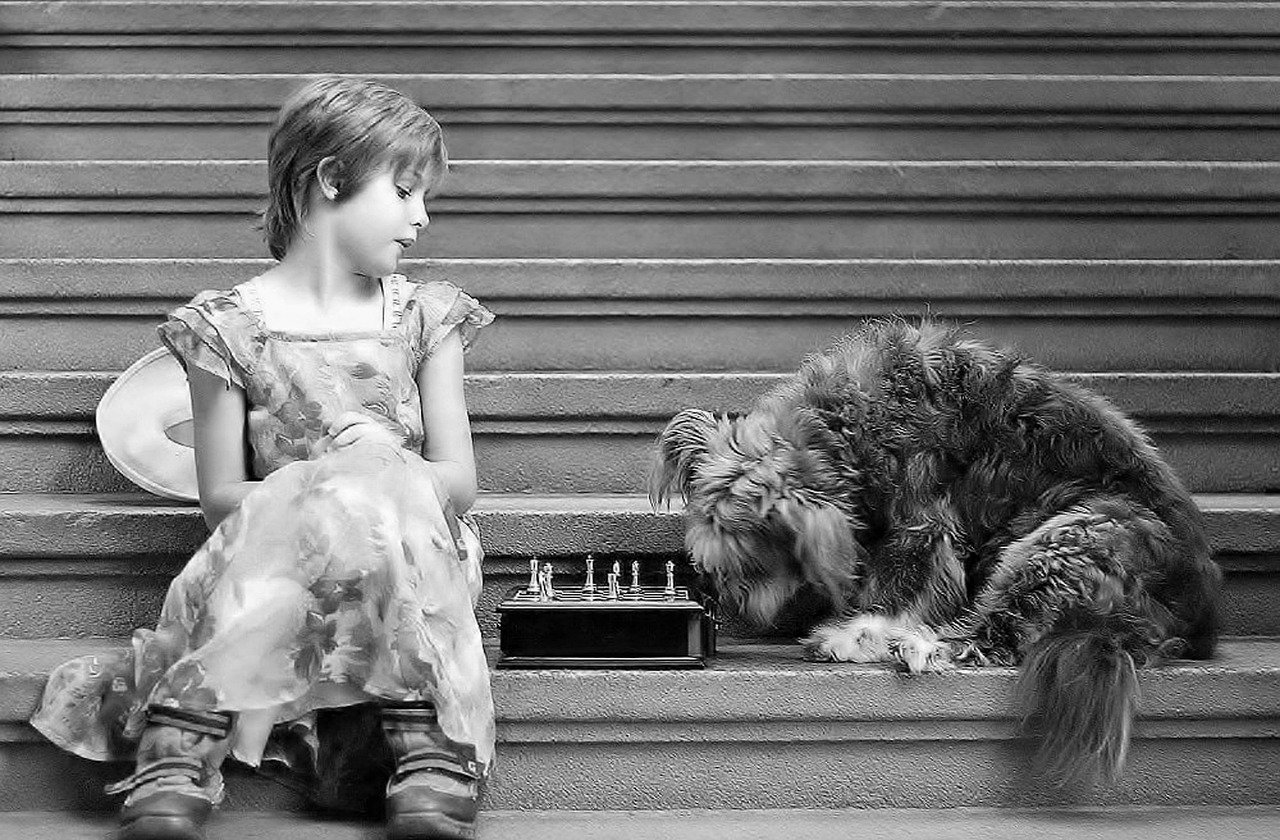
Parity Violation Experiment
The , conducted by Chien-Shiung Wu in the early 1950s, stands as a monumental achievement in the realm of experimental physics. Imagine a world where the laws of nature are symmetrical, where everything behaves as you would expect it to. Now, imagine discovering that this symmetry is, in fact, a mirage. Wu’s groundbreaking work shattered this illusion, revealing that certain processes in particle physics do not conserve parity, or mirror symmetry. This was a revelation that sent shockwaves through the scientific community, fundamentally altering our understanding of the universe.
Wu's experiment was centered around the beta decay of cobalt-60, a radioactive isotope. In this decay process, cobalt-60 emits beta particles (electrons) and neutrinos. The crux of her experiment involved observing the direction in which these beta particles were emitted when the cobalt-60 was placed in a strong magnetic field. Prior to Wu's work, physicists assumed that the emission of these particles would be evenly distributed, regardless of the orientation of the cobalt. However, Wu's meticulous measurements demonstrated that the electrons were emitted preferentially in one direction, depending on the spin of the cobalt nuclei. This was a clear indication of parity violation, a concept that was previously unimagined in physics.
The implications of Wu's findings were profound. It not only provided experimental evidence for the theory proposed by physicists Tsung-Dao Lee and Chen-Ning Yang, who suggested that weak interactions do not conserve parity, but it also led to a complete overhaul of the theoretical framework surrounding particle physics. To put it simply, Wu’s experiment was like discovering a secret passage in a familiar landscape, revealing that the rules governing the universe were far more complex than anyone had believed.
What's even more remarkable is how Wu conducted this groundbreaking experiment. She worked with a team of physicists and engineers, but it was her innovative approach and unwavering determination that drove the project forward. The experiment required precise measurements and a deep understanding of nuclear physics, showcasing her exceptional skills as an experimental physicist. Wu's ability to challenge the status quo and her relentless pursuit of truth not only earned her respect among her peers but also cemented her legacy in the annals of physics.
In recognition of her monumental contributions, Wu’s work has inspired countless physicists and researchers around the world. The Parity Violation Experiment is not just a chapter in the history of physics; it is a beacon of inspiration for future generations, especially women in science. Wu's success in a male-dominated field has encouraged many to challenge stereotypes and pursue their passions in physics and other scientific disciplines.
In summary, Chien-Shiung Wu’s Parity Violation Experiment was a watershed moment in physics. It not only challenged long-held beliefs about symmetry in nature but also opened up new avenues for research in particle physics. Her work continues to resonate today, reminding us that the universe is a complex tapestry of interactions, and that sometimes, the most significant discoveries come from questioning the very foundations of our understanding.
- What is parity violation? Parity violation refers to the phenomenon where certain physical processes do not exhibit mirror symmetry. This was a groundbreaking discovery in particle physics.
- Why is Chien-Shiung Wu important? Wu is recognized for her significant contributions to experimental physics, particularly her work on the Parity Violation Experiment, which reshaped our understanding of weak interactions.
- What was the impact of Wu's experiment? Wu's experiment provided experimental evidence for theories that challenged existing notions of symmetry in physics, leading to advancements in particle physics and influencing future research.
- How did Wu's work inspire women in science? Wu's success in a male-dominated field served as an inspiration for many women, demonstrating that with determination and talent, they could excel in scientific disciplines.
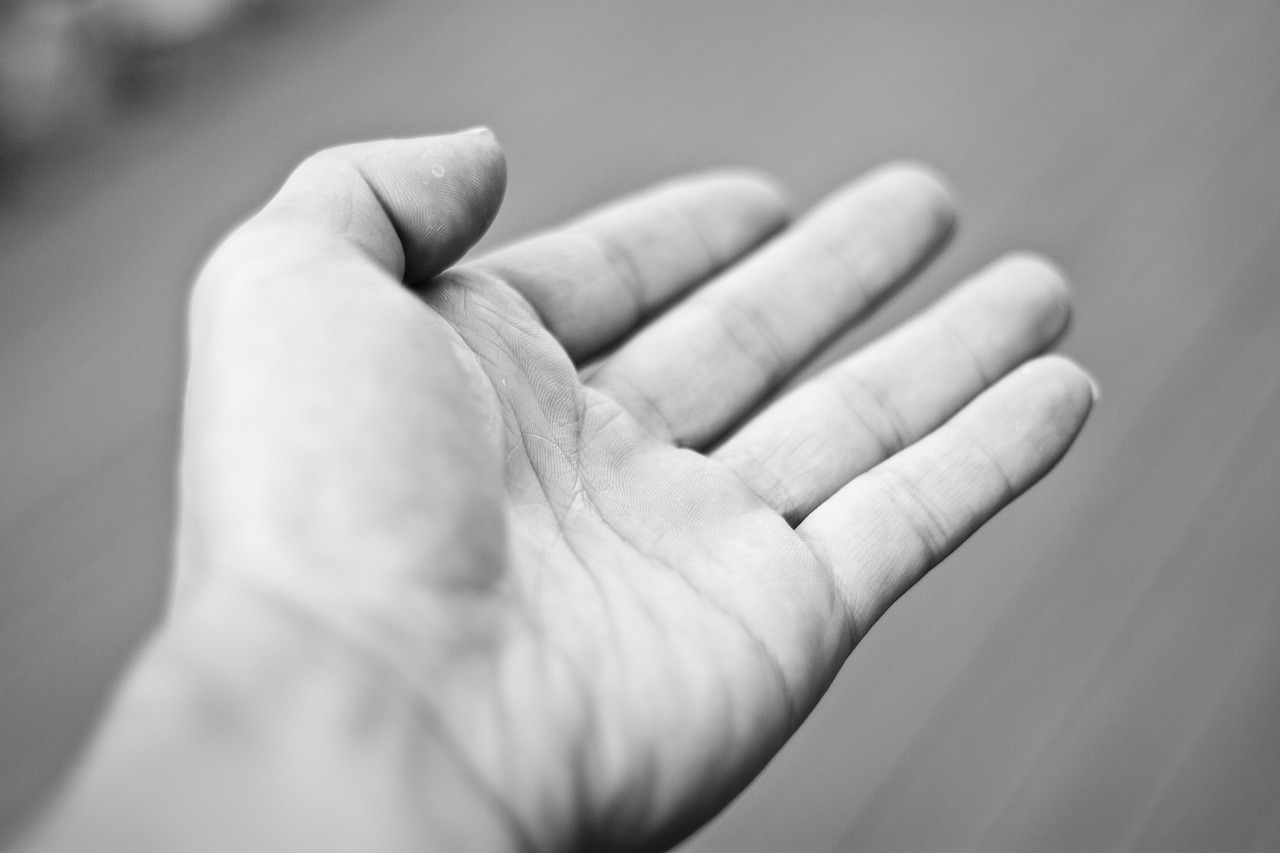
Awards and Recognitions
Chien-Shiung Wu's career was not only defined by her groundbreaking research but also by the numerous she received throughout her life. These accolades serve as a testament to her exceptional contributions to the field of physics and her role as a trailblazer for women in science. One of the most prestigious accolades she received was the National Medal of Science, awarded to her in 1975. This honor is bestowed upon individuals who have made significant contributions to the advancement of knowledge in the sciences. Wu’s receipt of this medal was a clear acknowledgment of her profound impact on experimental physics.
In addition to the National Medal of Science, Wu was also the first female president of the American Physical Society, a role she assumed in 1975. This position not only highlighted her leadership qualities but also emphasized her commitment to promoting the participation of women in physics. She was recognized by the Chinese Academy of Sciences as an academician, which further solidified her status as a leading figure in the scientific community.
Wu's contributions did not go unnoticed in her home country, either. In 1997, she was awarded the Presidential Medal of Freedom, one of the highest civilian awards in the United States. This honor was a reflection of her dedication to science and her role in breaking barriers for women in a male-dominated field. Her accolades are not just a list of achievements; they symbolize the courage and determination that she embodied throughout her life.
| Award | Year | Description |
|---|---|---|
| National Medal of Science | 1975 | Acknowledges significant contributions to the scientific community. |
| Presidential Medal of Freedom | 1997 | Highest civilian award recognizing outstanding contributions to society. |
| First Female President of the American Physical Society | 1975 | Recognized her leadership and contributions to physics. |
Wu's legacy extends beyond her scientific achievements; she has become a source of inspiration for countless aspiring scientists, especially women. Her story serves as a reminder that with hard work and perseverance, barriers can be broken. Today, many organizations and initiatives celebrate her contributions and encourage women to pursue careers in science, technology, engineering, and mathematics (STEM). Wu's life is a shining example of how one individual's work can resonate through generations, paving the way for future advancements in science.
- What were the major contributions of Chien-Shiung Wu?
Chien-Shiung Wu is best known for her work on the Manhattan Project, her experiments demonstrating parity violation, and her role in advancing nuclear physics.
- What awards did Chien-Shiung Wu receive?
She received numerous awards, including the National Medal of Science and the Presidential Medal of Freedom, recognizing her significant contributions to science.
- How did Wu influence women in science?
Wu broke barriers for women in physics, serving as a role model and encouraging future generations to pursue careers in STEM fields.

National Medal of Science
The is one of the most prestigious awards in the United States, recognizing individuals who have made outstanding contributions to science and engineering. For Chien-Shiung Wu, receiving this medal in 1975 was not just a personal triumph; it was a monumental acknowledgment of her relentless pursuit of knowledge and her groundbreaking work in experimental physics. This honor highlighted her significant role in reshaping our understanding of the physical universe, particularly in the realm of nuclear physics.
Wu's receipt of the National Medal of Science was a celebration of her remarkable achievements, particularly her pivotal experiments that challenged existing theories in physics. One of her most notable contributions was her work on the parity violation experiment, which demonstrated that certain physical processes are not symmetrical. This discovery was revolutionary, leading to a deeper understanding of the weak force, one of the four fundamental forces in nature. The recognition she received through the National Medal of Science served as a beacon of inspiration for many aspiring scientists, especially women who sought to carve out their own paths in a predominantly male-dominated field.
In addition to her scientific achievements, Wu's legacy is intertwined with her role as a mentor and advocate for women in science. She often spoke about the importance of representation and inclusivity in academia, emphasizing that diversity fuels innovation and progress. Wu's receipt of the National Medal of Science not only honored her contributions but also underscored the necessity of creating opportunities for future generations of scientists. It was a reminder that dedication and passion in the face of adversity can lead to extraordinary outcomes.
Wu's influence extended beyond her own research. She became a role model for countless individuals, demonstrating that perseverance and hard work can break down barriers. The National Medal of Science was not just a medal; it was a symbol of hope and a testament to the power of science to change lives. Her story continues to resonate, inspiring young scientists around the world to pursue their dreams, regardless of the challenges they may face.
As we reflect on Chien-Shiung Wu's legacy, the National Medal of Science stands as a reminder of her incredible journey and the lasting impact she has made on the field of physics and beyond. Her contributions have paved the way for future discoveries, and her life serves as a powerful narrative of triumph and inspiration.
- What is the National Medal of Science?
The National Medal of Science is an esteemed award in the United States that recognizes individuals for their exceptional contributions to science and engineering.
- When did Chien-Shiung Wu receive the National Medal of Science?
Chien-Shiung Wu received the National Medal of Science in 1975.
- What was Wu's most significant contribution to physics?
Wu's most significant contribution was her parity violation experiment, which challenged the previously held notions about symmetry in physics.
- How did Wu influence women in science?
Wu served as a role model and advocate for women in science, inspiring many to pursue careers in fields traditionally dominated by men.
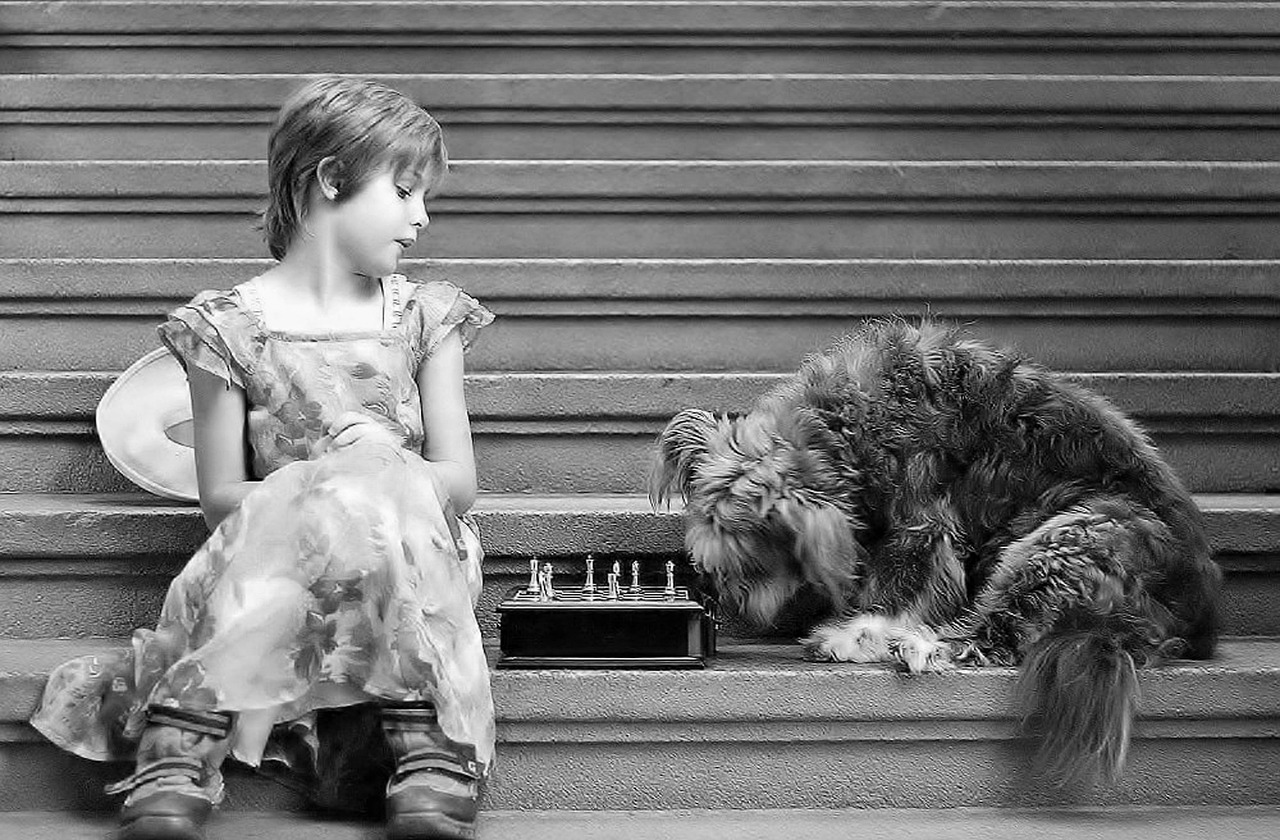
Legacy and Influence
Chien-Shiung Wu's legacy is nothing short of extraordinary. Her contributions to the field of physics have left an indelible mark that continues to resonate through the scientific community today. Wu not only advanced our understanding of nuclear physics but also paved the way for future generations of scientists, particularly women, who aspire to make their mark in fields traditionally dominated by men. She shattered glass ceilings and proved that women could excel in the most challenging scientific realms.
One of the most significant aspects of Wu's legacy is her role as a mentor and a symbol of perseverance. She often emphasized the importance of education and dedication in achieving one’s goals. Her story serves as a beacon of hope for aspiring scientists, showing them that with hard work and determination, they can overcome obstacles and achieve greatness. Wu's influence extends beyond her scientific achievements; she has inspired countless women to pursue careers in STEM fields, encouraging them to break barriers and challenge stereotypes.
Moreover, Wu's groundbreaking work in the field of experimental physics has had lasting implications. Her research on parity violation has not only transformed theoretical physics but has also influenced various applications in technology and engineering. For instance, her findings have implications in the development of new technologies, including advancements in quantum computing and nuclear energy. The principles she uncovered continue to be a cornerstone of modern physics, inspiring ongoing research and innovation.
Wu's impact is also reflected in the numerous awards and recognitions she received throughout her lifetime, which serve as a testament to her exceptional contributions. Below is a brief overview of some of the notable honors she earned:
| Award | Year | Description |
|---|---|---|
| National Medal of Science | 1975 | Acknowledged her exceptional contributions to the scientific community. |
| Wilks Medal | 1978 | Recognized her outstanding achievements in the field of physics. |
| Enrico Fermi Award | 1997 | Honored for her contributions to nuclear science. |
In conclusion, Chien-Shiung Wu's legacy is a multifaceted one, intertwining her remarkable scientific achievements with her role as a pioneer for women in science. Her story is not just about the accolades she received but also about the inspiration she continues to provide. As we reflect on her life and work, it's clear that her influence will endure, motivating future generations to explore the wonders of physics and beyond.
- What were Chien-Shiung Wu's major contributions to physics? Wu is best known for her work on the Manhattan Project and her groundbreaking parity violation experiment, which challenged existing theories in particle physics.
- How did Wu influence women in science? Wu's success and determination served as an inspiration for many women, encouraging them to pursue careers in STEM fields and breaking down gender barriers in science.
- What awards did Wu receive during her career? Wu received numerous accolades, including the National Medal of Science and the Enrico Fermi Award, recognizing her exceptional contributions to the scientific community.
Frequently Asked Questions
- Who was Chien-Shiung Wu?
Chien-Shiung Wu was a pioneering experimental physicist known for her significant contributions to nuclear physics and for her role in the Manhattan Project during World War II. Her groundbreaking work on parity violation revolutionized the understanding of weak interactions in physics.
- What was Wu's most famous experiment?
Wu's most famous experiment demonstrated parity violation in weak interactions, which challenged the previously held belief that physical processes should be symmetrical. This experiment earned her international acclaim and reshaped fundamental physics.
- How did Wu contribute to the Manhattan Project?
During the Manhattan Project, Wu played a crucial role in the development of the atomic bomb. Her expertise in experimental physics was vital in conducting important experiments that contributed to the project’s success.
- What impact did Chien-Shiung Wu have on women in science?
Wu's achievements served as an inspiration for women in science, breaking barriers and proving that women could excel in fields traditionally dominated by men. She became a role model for future generations, encouraging many to pursue careers in physics.
- What awards did Chien-Shiung Wu receive?
Throughout her illustrious career, Wu received numerous awards and honors, including the National Medal of Science, which recognized her exceptional contributions to the scientific community and her influence on future research.
- What is Wu's legacy in the field of physics?
Chien-Shiung Wu's legacy continues to inspire scientists today. Her groundbreaking work not only advanced the field of experimental physics but also paved the way for greater inclusivity and representation of women in science.



